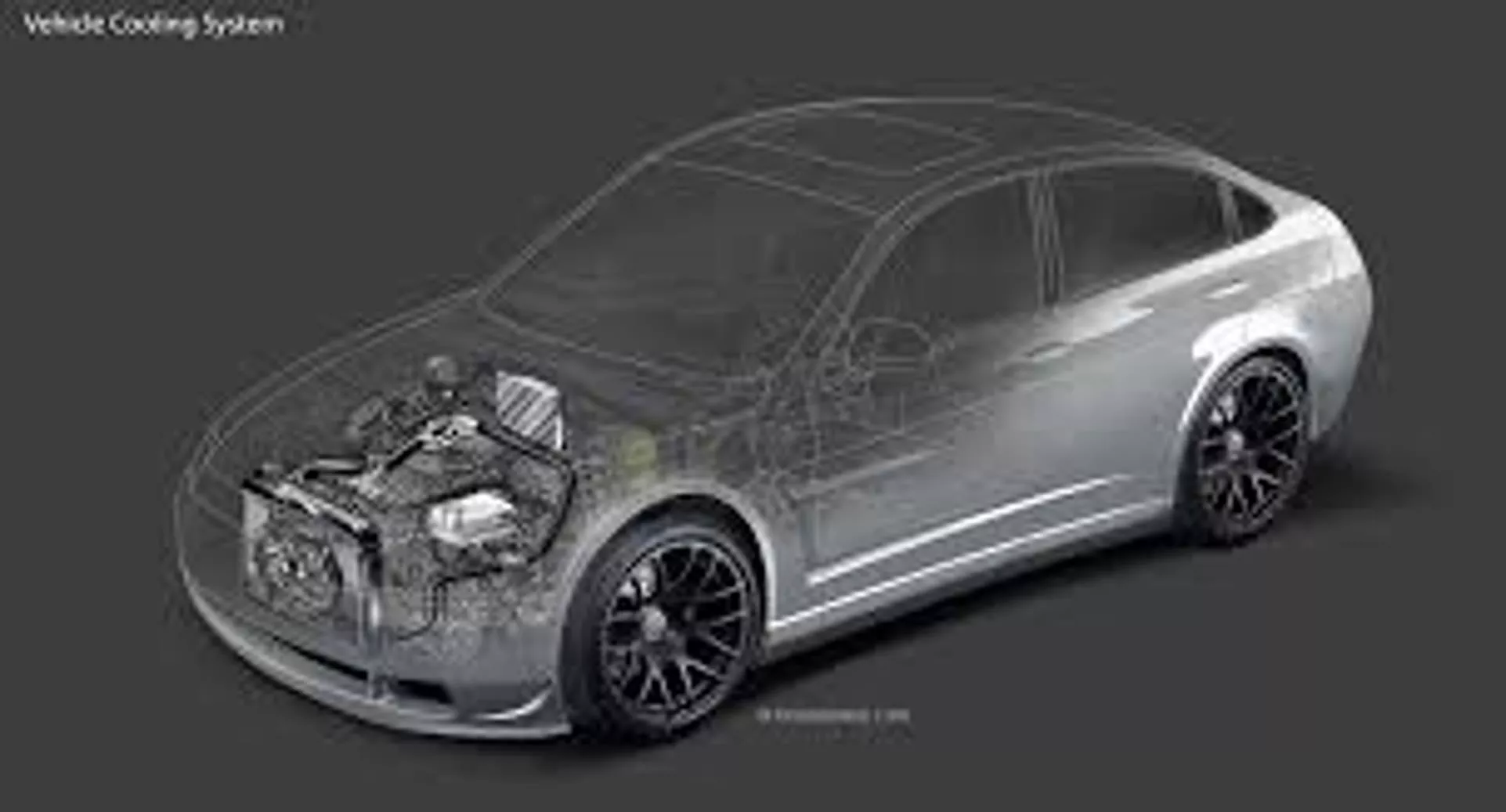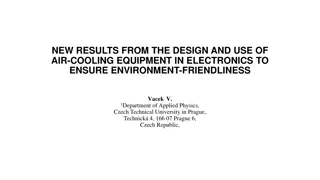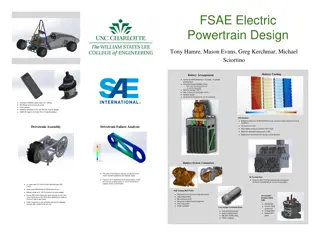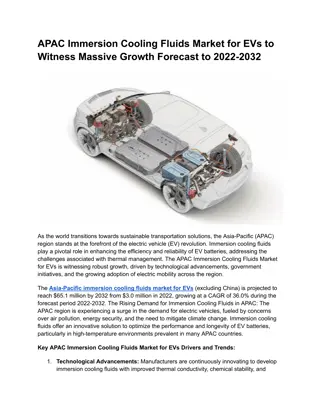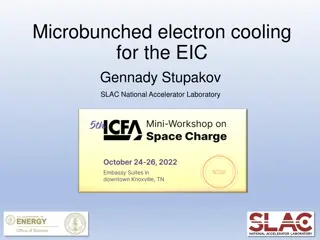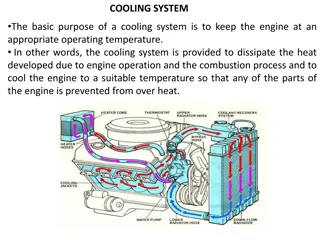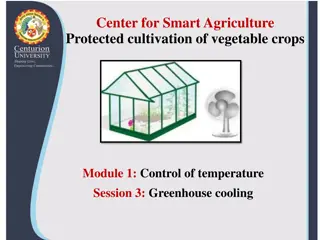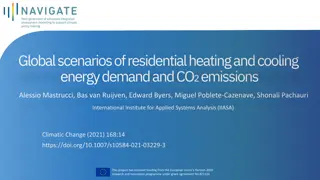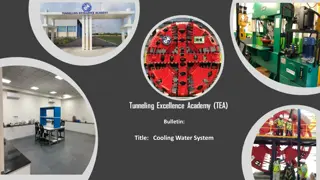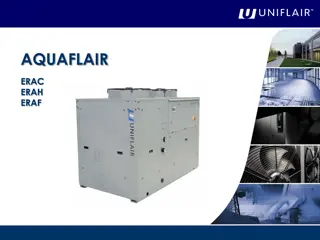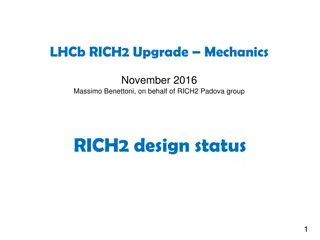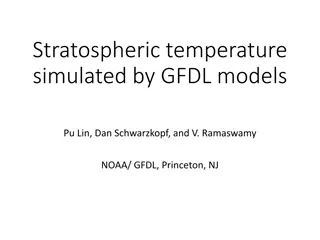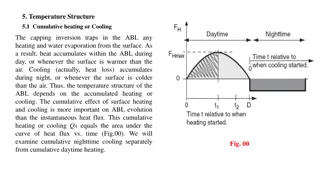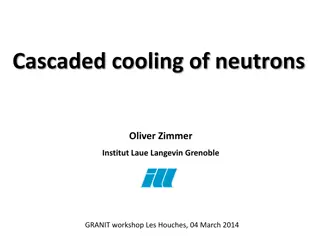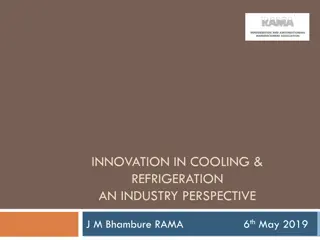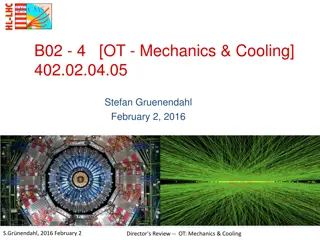THE COOLING SYSTEM
The cooling system in vehicles plays a crucial role in regulating engine temperature, preventing overheating, and ensuring optimal performance. It consists of different types such as air cooling and water cooling, each with its advantages and disadvantages. Learn about the major components and working principles of these systems to understand their importance in maintaining engine efficiency.
Download Presentation

Please find below an Image/Link to download the presentation.
The content on the website is provided AS IS for your information and personal use only. It may not be sold, licensed, or shared on other websites without obtaining consent from the author.If you encounter any issues during the download, it is possible that the publisher has removed the file from their server.
You are allowed to download the files provided on this website for personal or commercial use, subject to the condition that they are used lawfully. All files are the property of their respective owners.
The content on the website is provided AS IS for your information and personal use only. It may not be sold, licensed, or shared on other websites without obtaining consent from the author.
E N D
Presentation Transcript
PURPOSE To regulate the engine internal temperature To remove excess heat from engine To provide heat to the passenger compartment During the combustion of air fuel mixture the temperature as high as 2500 degreeC may be reached by burning gases. The temperature is so high as it will break the lubrication system. This temperature must be reduce by some mean to such a value , about 200C to 250C The purpose of cooling system to reduce the temperature of engine
Types of cooling system Air cooling system Water cooling or liquid system
Air cooling Air cooling system is the simplest method of cooling engines. The engine being cooled will have a flow of air moving over its surface. Many motorcycles uses air cooling for the sake of reducing weight and complexity. Surface area of metal in contact with air. Rate of air flow. Temperature difference between the heated surface and the air.
Advantage and Disadvantage of air cooled engine Advantage disadvantage Light in weight No topping up the cooling system No leaks to guard against Anti freeze not requird Less efficient cooling Not easy to maintain even cooling all around the cylinder. More noisy operation Limited use in motorcycle
Working of air cooling system A cylinder from an air- cooled aviation engine, a Continental C85. Notice the rows of fins on both the steel cylinder barrel and the aluminum cylinder head. The fins provide additional surface area for air to pass over the cylinder and absorb heat
Water cooling system Water cooling is commonly used for cooling automobile internal combustion engine. Water cooling is method heat removal from components. In this method of cooling water is circulated through water jacket around each of the combustion chamber. The circulating water when passes through the engine.
Major components of water cooling system Radiators Thermostat Water pump Fan Pressure cap Water jackets Antifreeze solutions
THE WATER PUMP Centrifugal type rotates than crank up to 10,000 gal. per hour Pulley driven, belt , chain drive or direct drive
The cooling fan Provide air flow with vehicle stopped Belt driven or electric Provides increased air flow at low RPM or vehicles
The radiator Transfer heat from coolant to the atmosphere Two types- vertical and cross flow Aluminium ,brass, copper core, brass, copper or plastic tanks.
Working of radiator Radiator is a device having a large amount of cooling surface to the large amount of air so that the water circulating through it is cooled efficently. It consists of a uper tank and lower tank and a core between them. The upper tank is connected to the water tank and lower is connected to the jacket inlet. The core is a radiating element , which cools the water.
Radius Pressure cap Regulates pressure in the cooling system Rated in psl always replace with same rating Pressure valve allows liquid or vapourto escape Vaccumvalve- as system cools , coolant can reenter system.
The thermostat Regulates enigne coolant temperature Rated in degrees 195 degrees most common Solid Expansion design wax pellet expands opening at temp increses, valve begins
Coolant Provides freeze and boil over protection, corrosion perventing and good heat transfer . Ethylene gylcol based recommended 50/50 mixture with the water , poisonous. Dex-cool used by GM, 5 YEAR
Water jackets A water jacket is a water- filled casing surrounding a device, typically a metal sheath having intake and outlet vents to allow water to be pumped through and circulated. The flow of water to an external heating or cooling device allows precise temperature control of the device.
Anti freeze solutions As well as preventing water from freezing up, antifreeze raises the boiling point of engine coolant to prevent overheating. The stuff also protects your engine from corrosion, aids heat transfer, and prevents scale from building up internally.
Diffrence between air cooling system and water cooling Air cooling Water cooling Air cooling is cheap in price. Air cooling reduces the weight of vehice. Air coolinng is often with a forced cooling (fan), because a lot of air is needed to cool down the engine. Water cooling system is more expensive as compared to air cooling system Water cooling system is havier and increases the weight of vehicle With water cooling the liquid is pumped around the engine.





